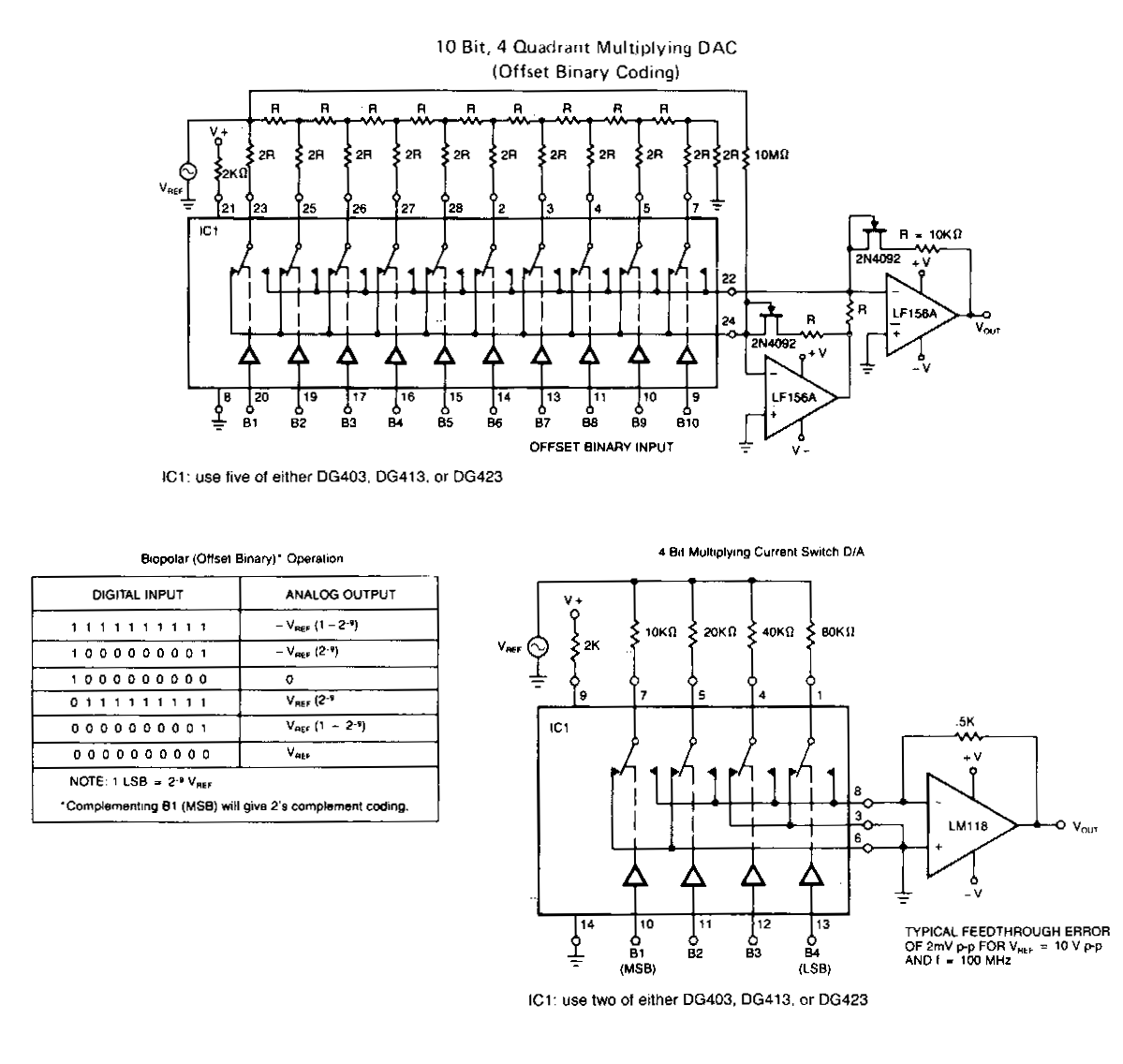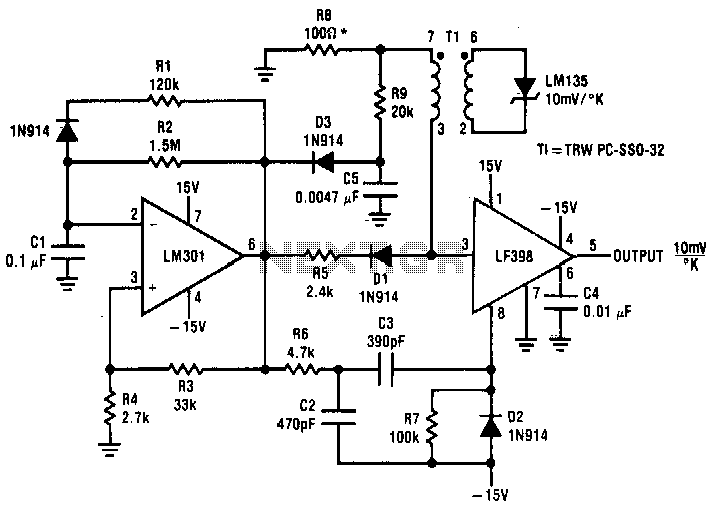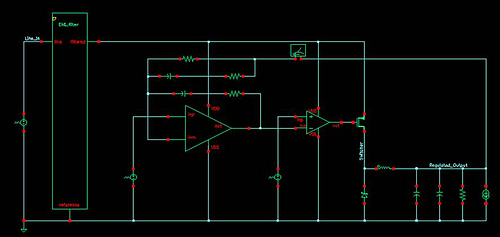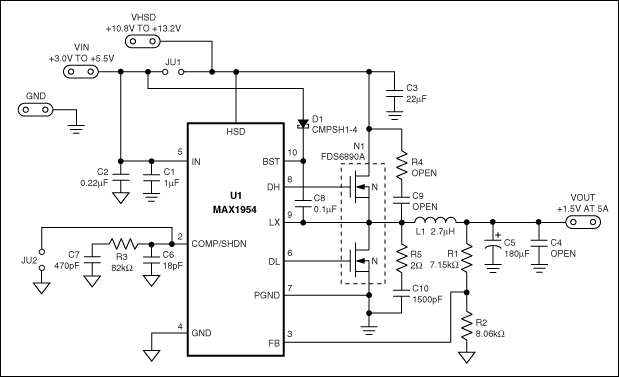
Voltage-to-current converters
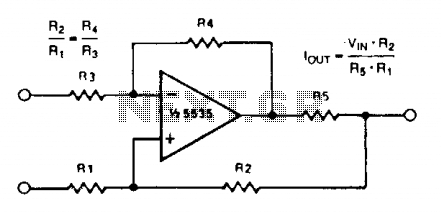
A simple voltage-to-current converter is illustrated. The output current is given by 0t or Vjn/R. For negative currents, a PNP transistor can be employed, and for improved accuracy, a Darlington pair can replace the transistor. With meticulous design, this circuit can effectively control currents of several amps. Additionally, unity gain compensation is essential.
The voltage-to-current converter circuit operates by converting an input voltage signal into a proportional output current. The fundamental relationship governing the output current (I_out) is defined by the equation I_out = V_in / R, where V_in is the input voltage and R is the resistance connected in the feedback loop.
To achieve negative output currents, a PNP transistor can be utilized. This configuration allows for the inversion of the current flow, making it suitable for applications requiring negative current outputs. For applications demanding higher precision and improved linearity, substituting the single PNP transistor with a Darlington pair is advisable. The Darlington configuration consists of two transistors that provide a high current gain, thereby enhancing the performance of the converter.
The design of the circuit must consider factors such as power supply voltage, load characteristics, and thermal management to ensure reliable operation, especially when controlling currents in the range of several amps. Adequate heat sinking may be required to dissipate excess heat generated by the transistors under load conditions.
Unity gain compensation is a critical aspect of the circuit design, ensuring stability across a wide frequency range. This compensation technique involves adding a capacitor in the feedback loop, which helps to mitigate potential oscillations and ensures that the converter maintains a stable output under varying load conditions.
Overall, this voltage-to-current converter design offers versatility and precision for various applications, including signal conditioning, actuator control, and driving loads that require specific current levels.A simple voltage-to-current converter is shown in the figure. The current out is 0t or Vjn/R. For negative currents, a pnp can be used and, for better accuracy, a Darlington pah-can be substituted for the transistor. With careful design, this circuit can be used to control currents of many amps. Unity gain compensation is necessary.
The voltage-to-current converter circuit operates by converting an input voltage signal into a proportional output current. The fundamental relationship governing the output current (I_out) is defined by the equation I_out = V_in / R, where V_in is the input voltage and R is the resistance connected in the feedback loop.
To achieve negative output currents, a PNP transistor can be utilized. This configuration allows for the inversion of the current flow, making it suitable for applications requiring negative current outputs. For applications demanding higher precision and improved linearity, substituting the single PNP transistor with a Darlington pair is advisable. The Darlington configuration consists of two transistors that provide a high current gain, thereby enhancing the performance of the converter.
The design of the circuit must consider factors such as power supply voltage, load characteristics, and thermal management to ensure reliable operation, especially when controlling currents in the range of several amps. Adequate heat sinking may be required to dissipate excess heat generated by the transistors under load conditions.
Unity gain compensation is a critical aspect of the circuit design, ensuring stability across a wide frequency range. This compensation technique involves adding a capacitor in the feedback loop, which helps to mitigate potential oscillations and ensures that the converter maintains a stable output under varying load conditions.
Overall, this voltage-to-current converter design offers versatility and precision for various applications, including signal conditioning, actuator control, and driving loads that require specific current levels.A simple voltage-to-current converter is shown in the figure. The current out is 0t or Vjn/R. For negative currents, a pnp can be used and, for better accuracy, a Darlington pah-can be substituted for the transistor. With careful design, this circuit can be used to control currents of many amps. Unity gain compensation is necessary.

